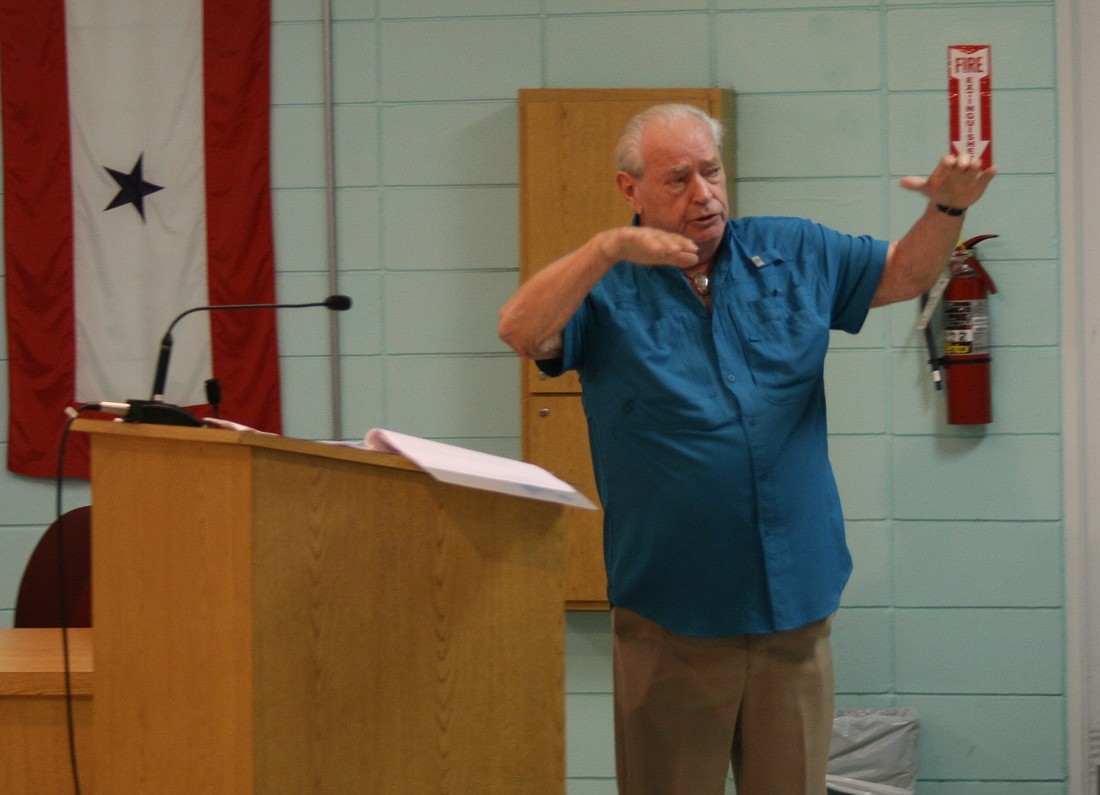- April 16, 2024
-
-
Loading

Loading

When Dick Holmberg presented the feasibility study that outlined his plan to save Flagler Beach to city officials and residents Thursday, one word was used again and again to describe it: disappointing.
The $50,000 study, funded by Flagler County’s Tourist Development Council, concluded that Holmberg can use his technology to save Flagler’s eroding beach for $10 million by installing eight undercurrent stabilizers at two sites in the northern and southern parts of the city.
But it said little else. Much of the report consisted of photos of beaches where Holmberg has installed his technology in the past — but those photos have been in the hands of city officials for about a decade. They are also available on Holmberg’s website.
City Commissioners said they expected more from the study, whose approval and funding barely scraped an approval from the Flagler County Board of County Commissioners.
They said they expected a detailed, Flagler Beach-oriented explanation of how to install Holmberg’s technology in Flagler Beach. They expected a detailed shoreline analysis explaining why the undercurrent stabilizers, which have never been used on the east coast, would be successful here. They expected something they could take to state and federal governments to make a case for funding Holmberg’s technology, which is a nontraditional method of beach restoration.
“I wanted this to work so bad I would have sold my soul to have your company come here and do this for us,” said Linda Provencher, the city’s mayor. “I wanted so much to believe that you could do this for us. But shame on you, because you have wasted so much of our money and our time.”
Holmberg’s technology has been implemented successfully in beaches off Lake Michigan and the Persian Gulf. But the Atlantic Ocean is another animal. Commissioners said they hoped to see in the study why Holmberg’s technology would work for Flagler Beach and would address things like hurricanes.
Commissioners also asked how Holmberg came up with the $10 million cost he presented. Previously, Holmberg said his technology generally costs $1 million per mile of beach, and the Flagler Beach project would center on a six-mile stretch of shoreline. The study gives little financial breakdown of the $10 million Holmberg would charge.
“I’m embarrassed by this document, and you should be too,” Provencher said. “How could you do this to this city? We believed in you. We really, really believed in you.”
Holmberg said he gave the city all he could.
“It’s been scientifically proven again and again, and all that stuff you said isn’t in there — it’s there,” Holmberg said, his voice rising as he spoke. “I’m presenting the truth, and I don’t know what else to do here.”
Commissioner Kim Carney suggested the city should have been more specific about what it expected when it outlined its contract with Holmberg. Several residents who spoke during public comment said the same.
While no decisions were made at the workshop, commissioners made it clear that the study in its current form wouldn’t work.
“I think your system sounds like it would work,” Commissioner Marshall Shupe said. “I know you passionately believe in it, and I want to believe in it too, but I don’t think we can take this report and use it to get money or permits.”
Shupe criticized Holmberg’s depiction of where the stabilizers would be placed, which are shown by lines superimposed over a Google Earth satellite image. He said he expected an explanation of how the locations were chosen.
Holmberg’s study was conducted at the same time as a 10-year, $3.5 million feasibility study by the U.S. Army Corps of Engineers, which is expected to conclude this year. Carney said she hoped that commissioners would be just as critical when those results are released.
Despite criticism, Holmberg remained faithful to his work.
“I’m not asking you to waste money,” he said. “I’m telling you how to get out of this mess. I’m your alternative to all of this.”